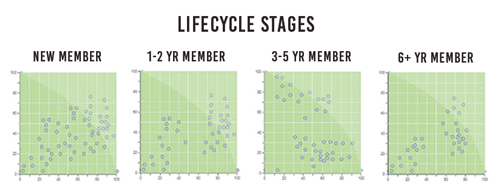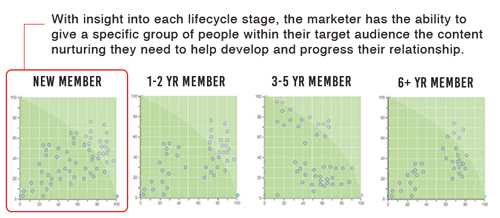With Facebook, Twitter, LinkedIn, blog websites, and other online platforms, there is a lot information to sift through as a consumer. As a marketer, even if you do have a content marketing strategy in place, the information you are distributing may not be connecting with your audience the way you predicted.
According to Demand Metric, 80% of people appreciate learning about a company through custom content. Consumers prefer genuine and informative content over advertisements, or sales pitches that present a lop-sided view of the product. Content marketers therefore need to establish themselves as authorities on the subject matter by creating high quality information. Providing balanced, analytical, and insightful content keeps visitors coming back for more – and lends credibility – which permeates to the marketer’s brand. But how do you create informative and impactful content when individuals within your target audience have a different relationship or understanding of your brand?
With Customer Lifecycle Marketing you have the ability to graphically see where a contact or company is in their relationship with your business. Whether someone is a prospect or avid customer, where they fall within the lifecycle stage map determines how the contact or company is communicated to, by whom, and how often.
Consider the following example:
The head marketer of a large gym has just implemented the Customer Lifecycle Marketing platform. He/she develops their stage map to reflect new customers and old customers, depending on the length of time each individual has been a member.
After examining the stage map, the marketer can see that a large number of people reside in the “New Member” stage. Because they are in the “New Member” stage, the marketer can conclude (from other collected data) that those people know about the gym and have come to workout there as part of a free trial. Now the marketer can develop a content marketing strategy that promotes first-time gym membership deals, or information regarding all the different classes they offer. The marketer can distribute this information on social media and even develop an email campaign that goes out solely to this audience. In return, the marketer sees that first time customers are better educated about the gym, leading to an increase in gym membership purchases.
Finally, the marketer can derive the full benefits of their content marketing strategy when they use their content to generate new leads as well. For instance, the marketer may create content for download by registration, capturing valuable leads in the process.
Interested in finding out more about Customer Lifecycle Marketing? Be sure to check out, Content Marketing Strategy: The Lifecycle Journey for a stage-by-stage breakdown!



